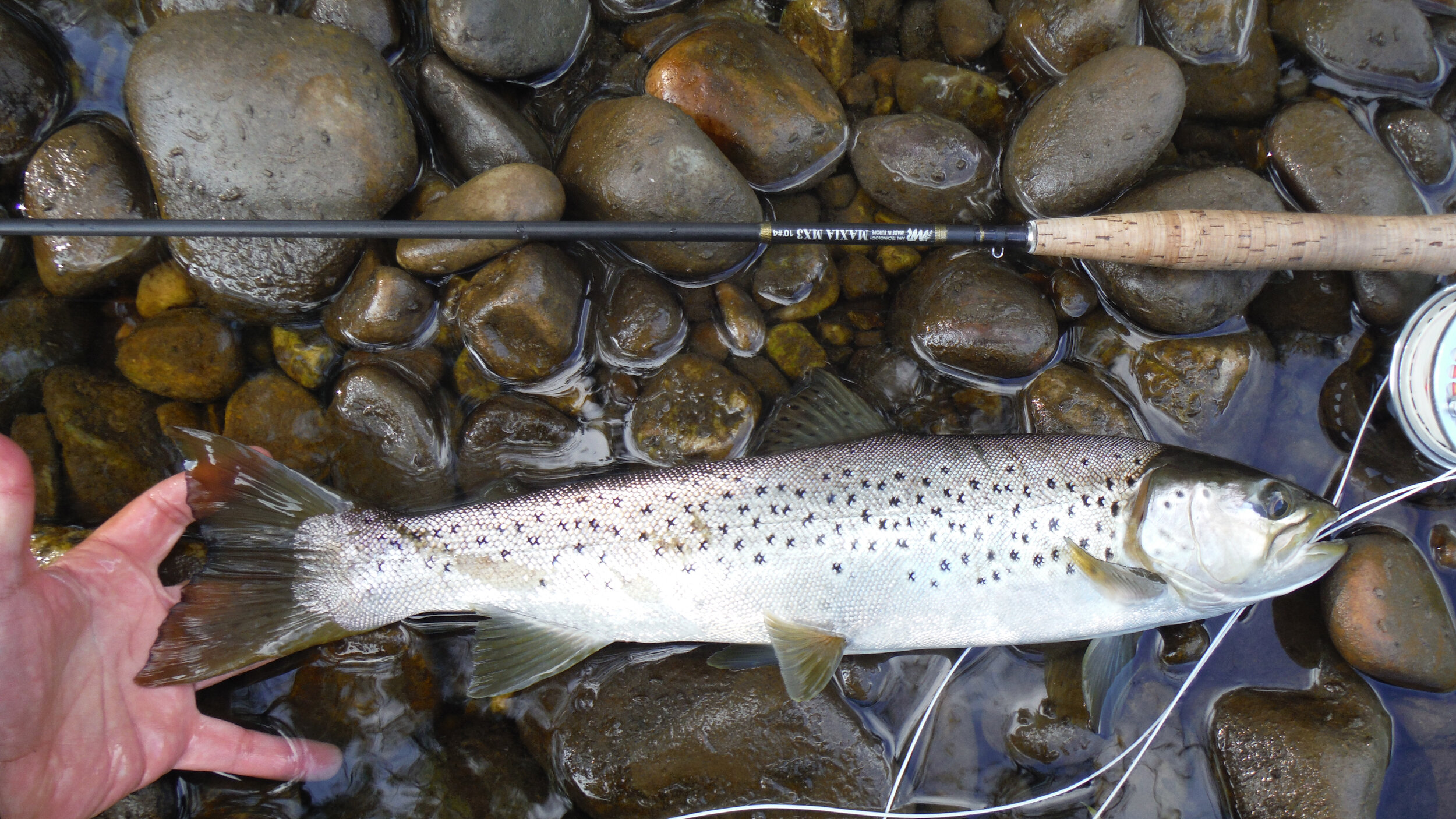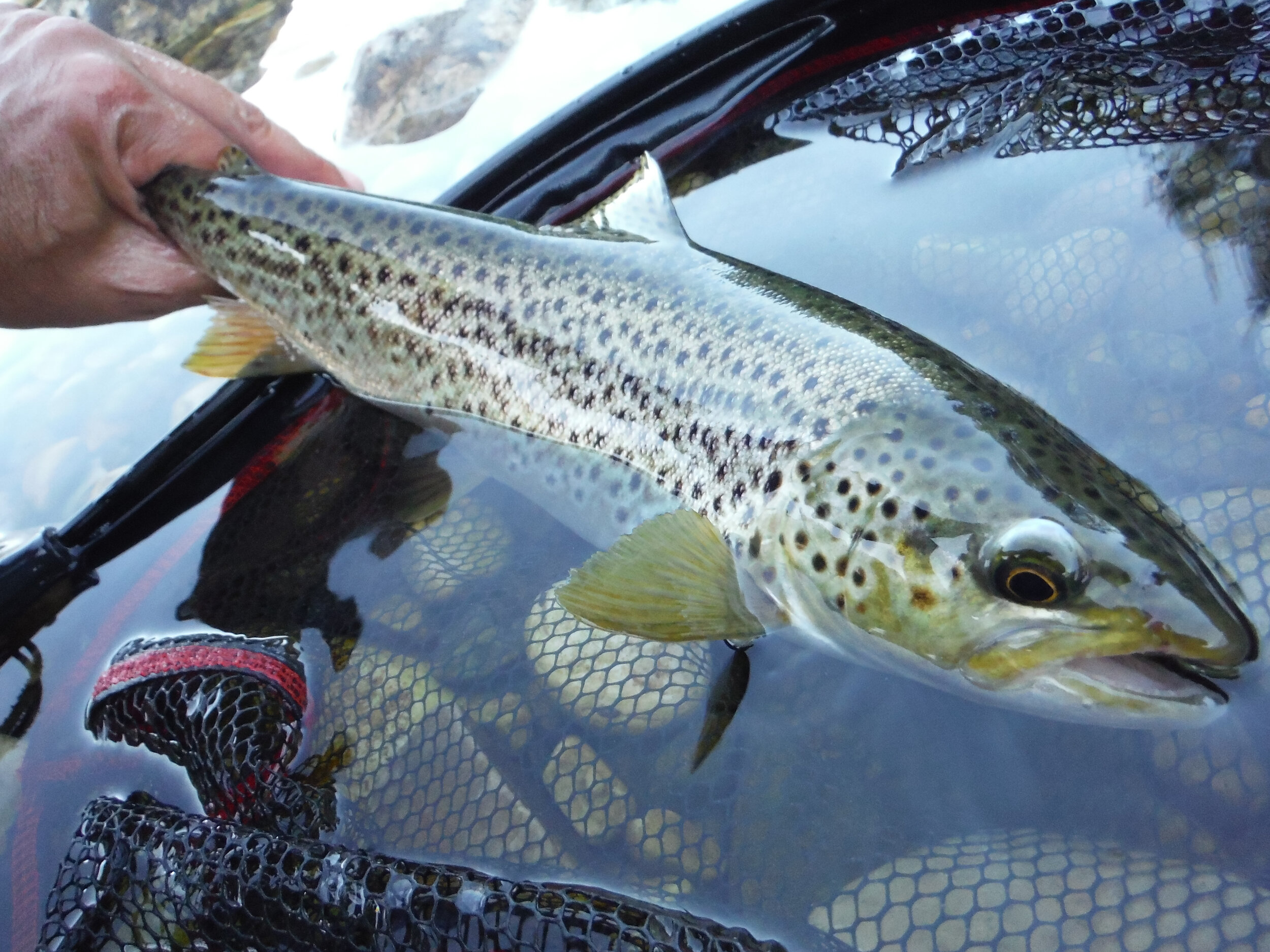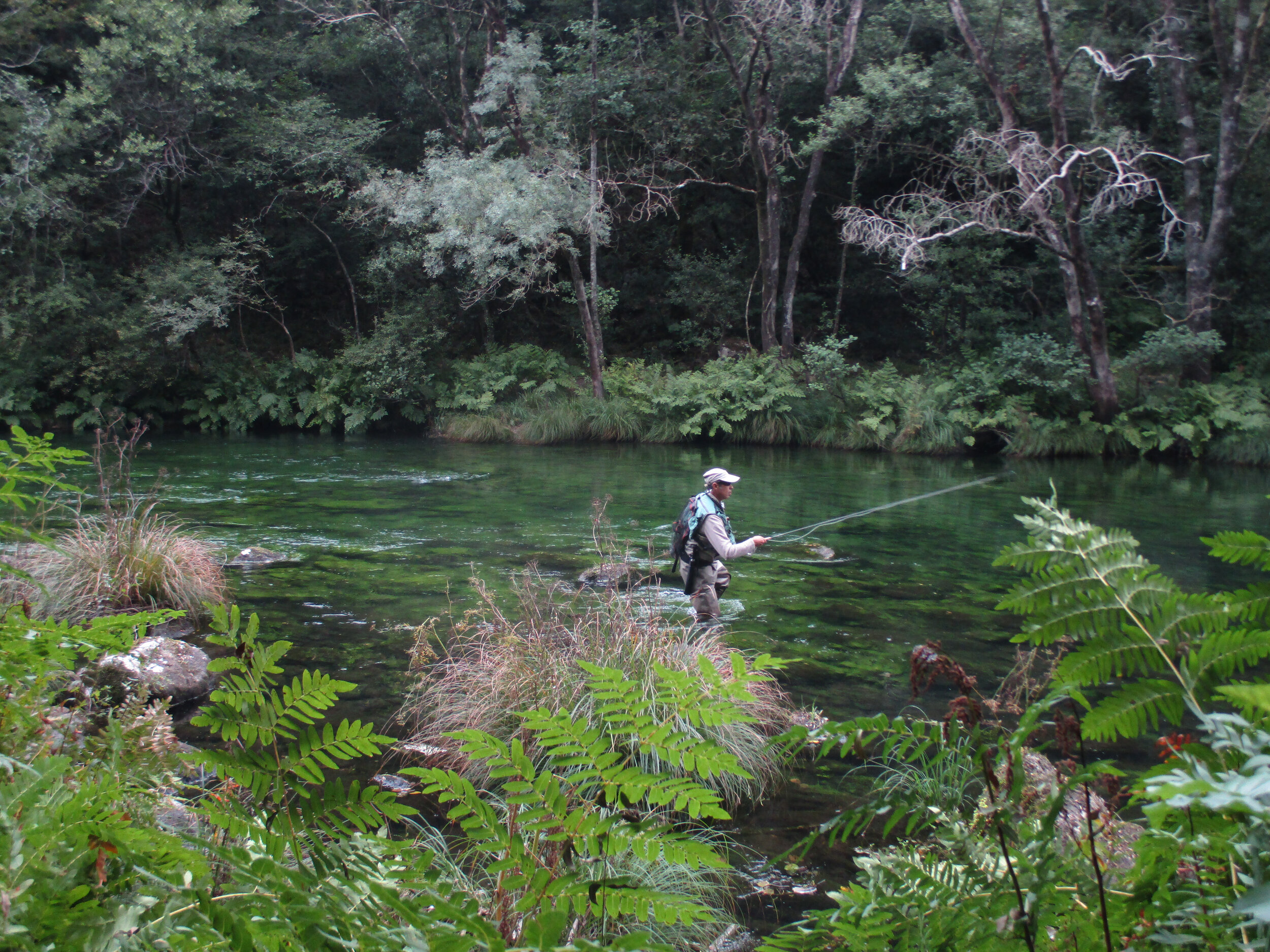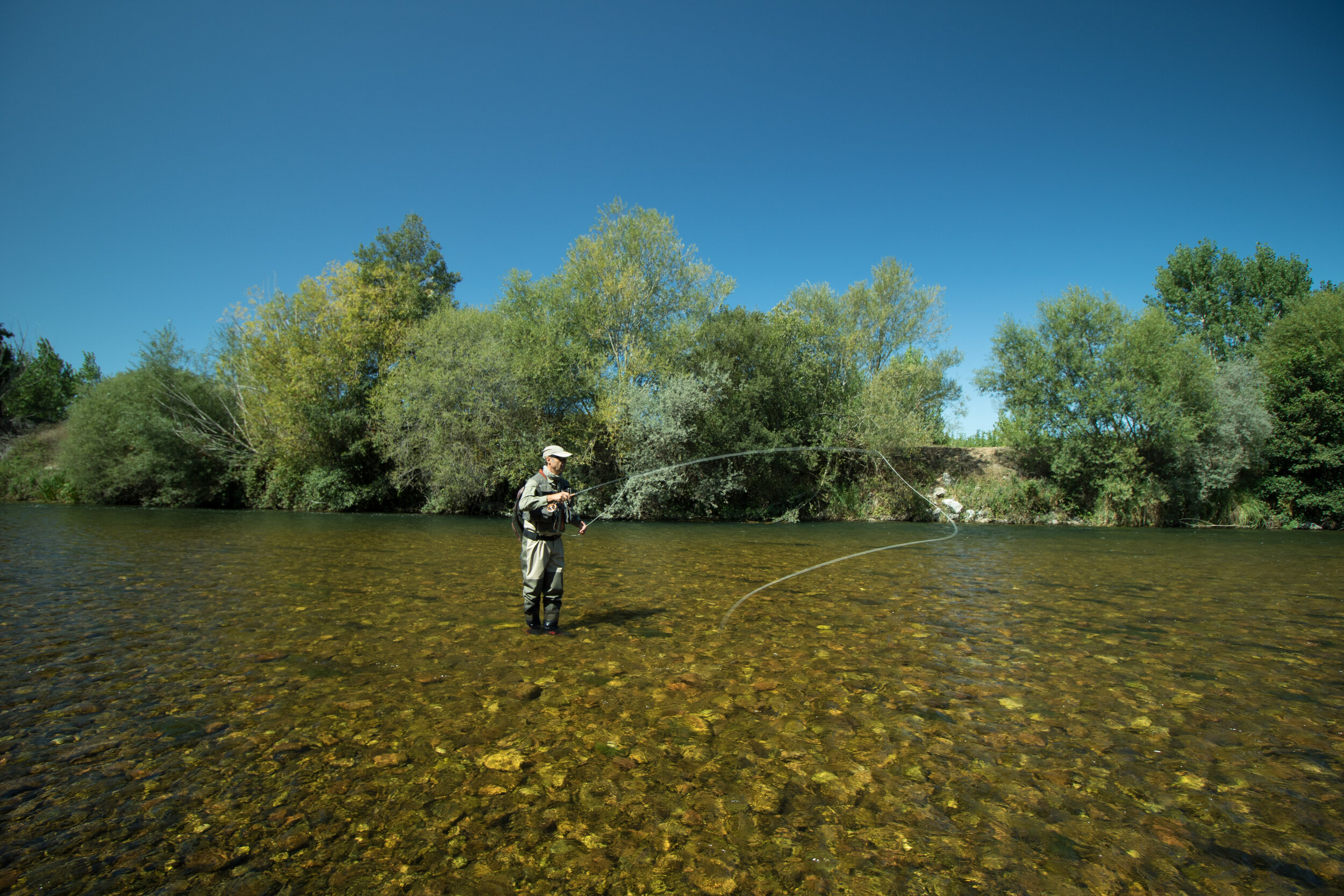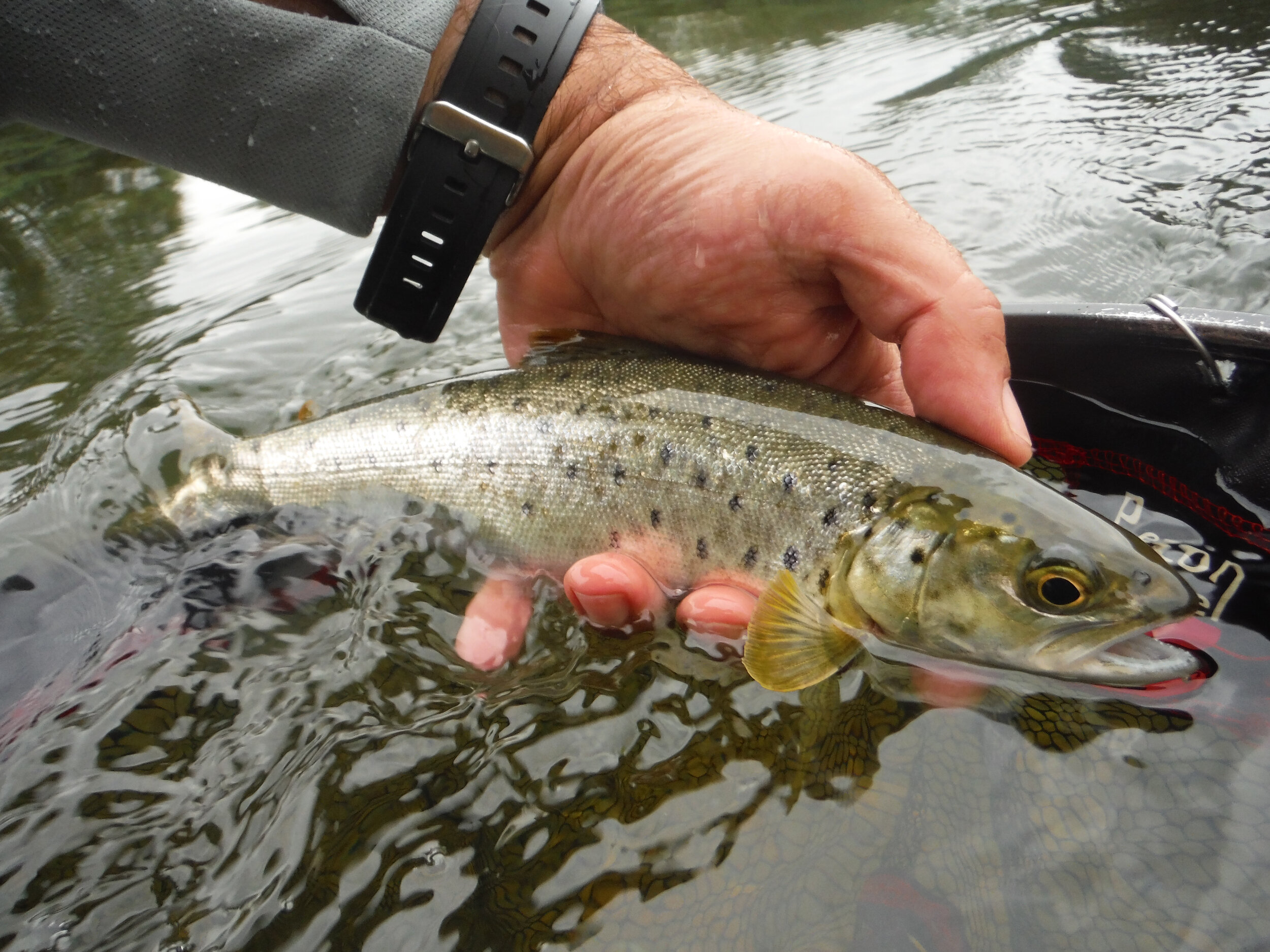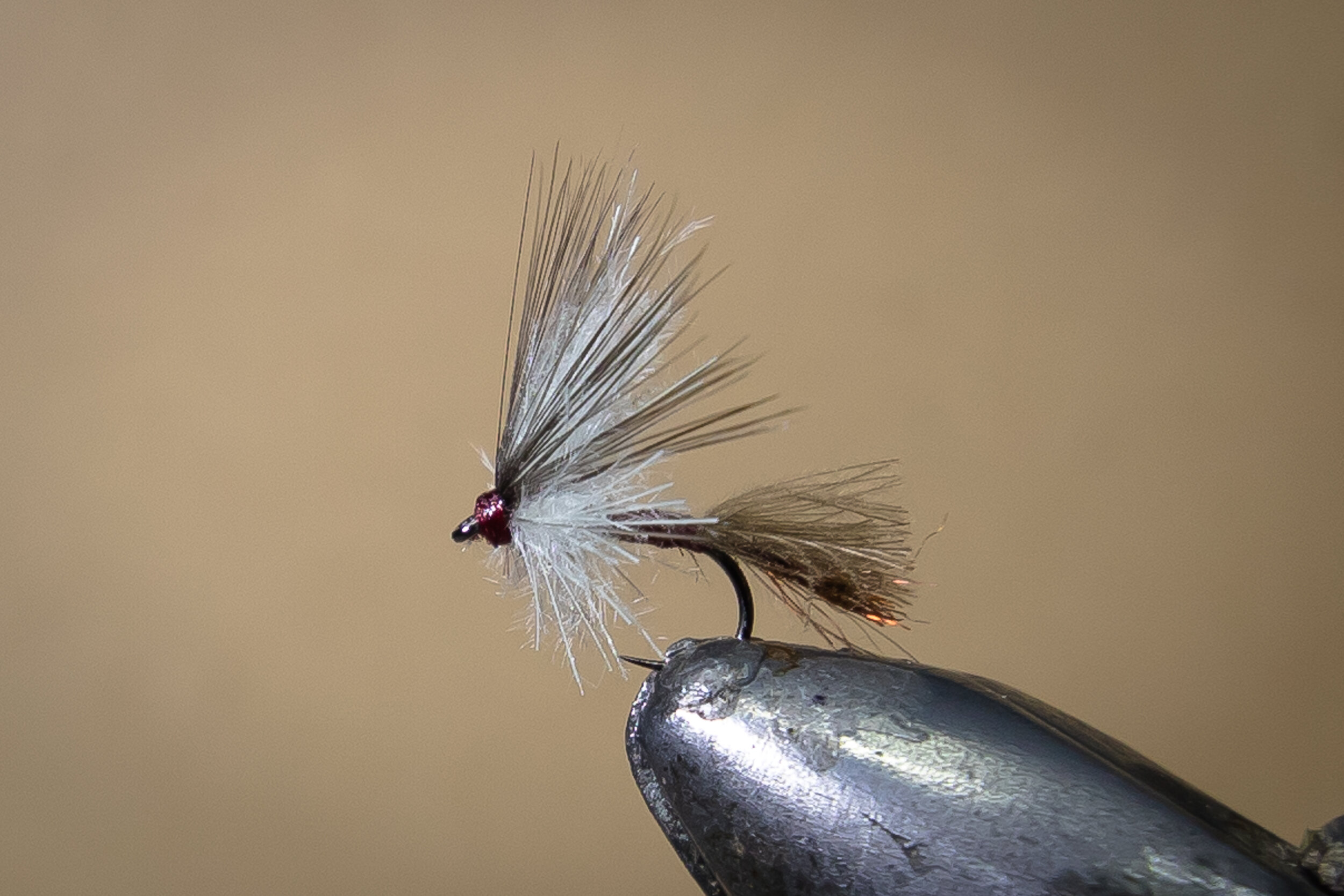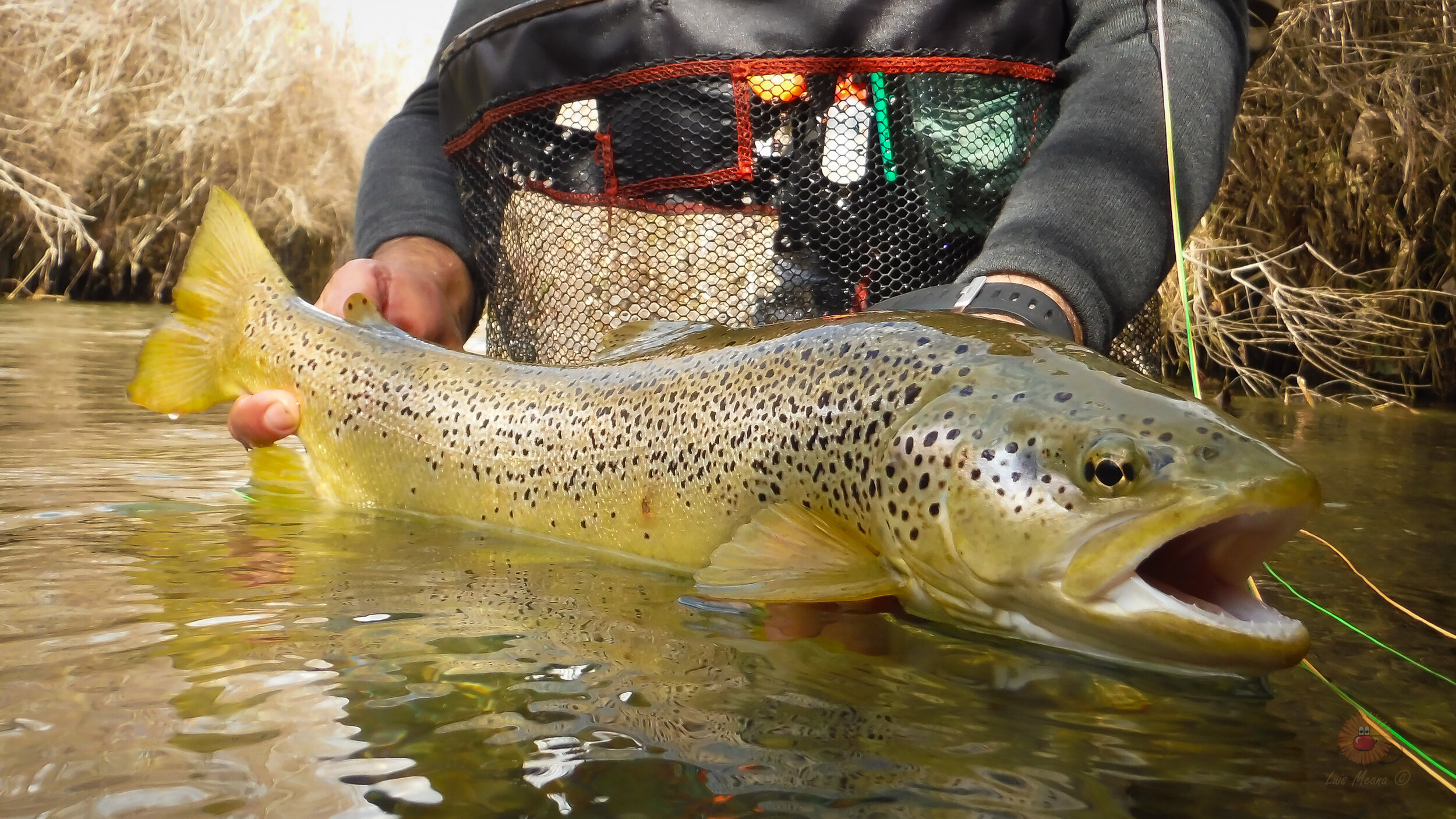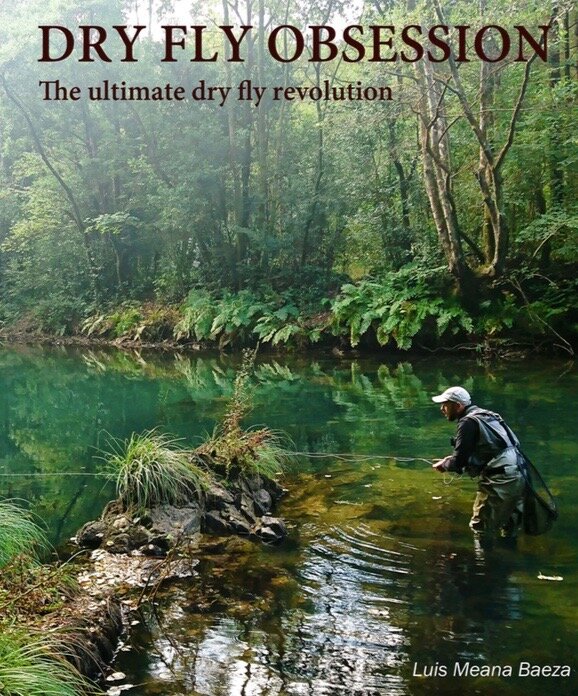
Luis Meana
Translated by Alvaro G Santillan
1. Choice of equipment Rods, reels, fly lines, fly floatants, clothes, glasses, and other useful items.
All the elements are important. However, I think that all of them haven’t got the same importance if we are searching for a long natural presentation, the leader would be the most important part, followed by the rod and the line. In my opinion, the leader is much more important than the fly line in most fishing situations. Line profiles and tappers are important for casting, especially when we have to fish in a tough situation: longer cast, roll cast, spey cast, etc. In most of the cases, a classic WF line is enough for getting enough energy into a well-configured leader.
Reels in my opinion are the less important part. I prefer the traditional ones: light and with a large arbor.
Regarding sunglasses, I use Techlite glass from Smith. The sunglasses are an important element when sight fishing and they are important for protecting our eyes during long fishing days.
Clothing and other elements can help you, of course. Some more than others.It all begins with an idea. Maybe you want to launch a business. Maybe you want to turn a hobby into something more. Or maybe you have a creative project to share with the world. Whatever it is, the way you tell your story online can make all the difference.
2. Leader material, build up, length, and knots.
As I said in the previous point, in my opinion, this is the key element. This is the element that will control the energy in the final presentation. And of course, this is the part of our set up that is going to be closer to the fish during the presentation.
Obviously, leader rigging depends on the kind of waters where we are fishing, as well as the weight and volume of the fly. My technique is based on extra long leaders, about 20-25 feet in length, that I usually employ to fish with small flies for trout that require extremely natural and subtle presentations. That is my kind of dreamed case scenario. I do not always employ the same configuration and even a slight change in the wind could make that I change my full leader configuration.
I like to use tapered leaders, not too thick in the but section. Adding some nylon sections for increasing the speed that reaches the tippet. I get that by decreasing drastically the diameter between these sections and managing the energy in the final section, the tippet.
I mostly use nylon for the leader and middle sections and I choose between fluorocarbon or nylon depending on the river and diameter needed.
I use the classic blood knot in the thicker sections, surgeon knot in the middle ones, and “seaguard” knot in the tippet junction. I never use two fluorocarbon sections in a row. Nylon is softer, cushioning the knot and giving it more strength.
3. Approach and stealth.
Always slowly. We have to think in many issues when we are getting closer to a fish. Many anglers just don’t take the time. Stealth and a quiet and slow approach are essential. The power fishing, a trend nowadays, doesn’t help at all. Maybe that’s the best way for getting big numbers in fast-flowing waters, but it is not the way of getting the biggest, oldest, wisest, and most complicated ones.
We need that peace for getting the message that the river is narrating. Only when we are in that kind of meditation, we can identify all the signs.
4. Reading the water.
I would answer this question as I did in the previous one: experience is useful and it helps. Fishing empty waters is useless. Fish have their own habits. We have to learn about and that takes time and experience. When you know that you are playing with an advantage. If you focus your effort on the key spots, you are fishing more efficient. This is a kind of instinct, it is like if you were able to spot all the fish under the water and distinguish the ones that are feeding.
5. Casting ability, which casts are essential.
Fly casting is an essential part of fly fishing. I know some incredibly good casters who are a disaster presenting their flies and, in the same way, I know some incredibly good anglers who are not able to cast properly or getting some distance.
In my opinion, a combination of both worlds is the best. It is true that some setups used for casting on the grass are not the best if we are searching for gentle presentations. It all depends on the kind of fishing situation because both are different worlds.
In the same way, an angler with thousands of hours by the river probably has many casts that probably are un-named, and that are born and raised by the water. And that’s something to consider as well.
6. Entomology, what should we know.
All kinds of knowledge count and a good understanding of entomology helps to catch more fish. In addition, this will open a new world that will help us to understand better and enjoy the river more. However, entomology is a complex filed and many of us make mistakes when we are trying to classify species.
7. Rise forms Can they tell us something?
Indeed! The way in which fish take natural flies gives us lots of information. Where are they feeding? What kind of fly and stadium? What is the size of the fish? Has it noticed our presence? This and many other questions can be answered just paying attention to the rise.
8. Fly selection, Size, shape, materials, which flies are essential.
I love the patterns tied with Gallo de León feathers. In my opinion, it is the best material I've ever used for tying mayfly wings.
All my life I have been developing a general pattern for dun and spinner mayflies: El Pardón de Meana, a well-known fly, used in the 5 continents with surprising results. The secret is in the bright wings tied with Gallo de León, the silhouette, and the balance when presented.
It is true that CDC is the most used material and that is reasonable because it is easier to tie, it is effective, cheaper and we have a lot of colours, but in my opinion, it is not the most effective.
I always try to match the hatch depending on the river conditions, water, and weather. Trying to make a long cast with a thin tippet and a bulky CDC fly with heavy wind is nonsense.
On the other hand, light conditions are essential. I always carry with me the same pattern in different tones and shape and I choose depending light conditions. There are some that could be effective whatever the conditions are, of course.
I don't dare to classify a fly as a must. With my experience, I have collected enough memories and I will not despise or praise any. However, if you ask me for the 5 ones I use the most, these would be:
Pardón de Meana patterns.
Hares ear emerger, with wings in hare, cdc or synthetic.
Little mayfly emergers, fishing under the surface.
Terrestrials: beetles and ants.
Elk and Gallo de León caddis.
9. Presentation and drifts.
This would be the key point I could be talking about for pages and pages, as I did in my book DRY FLY OBSESSION. These are the two keys to success. All the dry fly anglers are searching for the right technique and the needed skills to present their fly naturally and get infinite drifts.
In some rivers in northern Spain, we have the chance of fishing for sea trout with dry flies. Here, the sea trout feed on the surface as if they were resident brown trout. They are the most selective fish I've ever fished for. They are the most demanding ones. Fishing for these sea trout is like getting a university degree in dry fly fishing. In my opinion, this is the purest dry fly fishing and this is the reason I am obsessed with leader design. Nothing is enough for them.
My passion makes me think about these creatures for 365 days a year and that for sure makes me a better angler. Presentation and drift depend on our skills, but this won’t be enough if we didn’t have the right tools. When you finally get it, fishing turns out to be more than catching fish. When you achieve a 25-meter cast into the other bank, under the trees, while you make a correction for getting a gentle drag upstream in the fly and a fish comes up… that’s heaven.
10. Upstream or downstream?
All the possible angles are OK. Many times we tend to fish upstream, but I fish in big rivers where I usually cast 90 degrees. Sometimes, depending on the river and the species, I have to fish downstream. I think that learning how to fish from all angles is useful.
11. fighting fish.
It is crucial. Lack of experience of many anglers when fighting with big fish does the fight a big problem. It is the difference between your dreamed lifetime fish or losing it without knowing it was so close.
The correct technique when fighting a fish could save 90% of fighting time, and obviously, that makes the survival rate higher. I discuss that further in my book.
Use the force of the current in your favor. Most anglers have fear of it when they have a big fish on, but taking advantage of it and using the right rod angle will help us to control the fish. And the fish will do whatever we want, as it would be a friendly dog. This will not save us in 100% of the cases, but it will in most of them.
DRY FLY OBSESSION- is my contribution, the experience collected in 35 years of passion. A technique that is called “The dry fly fishing revolution” by many of my English friends. The book is about my tips and tricks, but above all, I try to share my personal approach to fly fishing in which fish and Nature are the main characters.
Available on the Website: www.cotossalmoneros.com
Or writing an email to flyfishing@pardondemeana.com.
